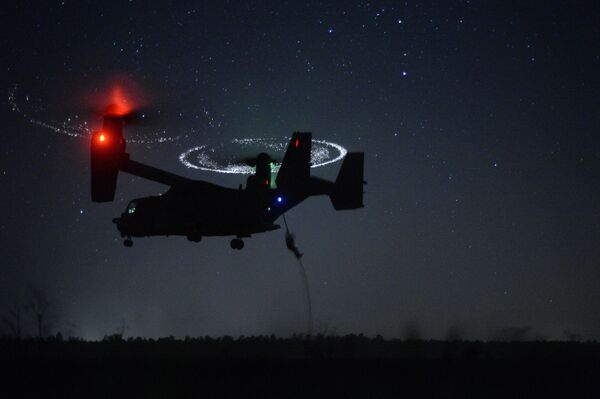The US government has decided to deploy the CV-22 Osprey tilt-rotor transport aircraft at its military’s Yokota Air Base in western Tokyo starting in 2017.
Washington has already notified the Japanese government of the Air Force's plan to deploy a total of 10 of the advanced — three in the second half of 2017 and seven within a few years, according to The Japan Times.

It will be the first deployment of the aircraft for long-range missions on the main island of Honshu, a move set to enhance the US forces’ presence in East Asia.
The CV-22 Osprey is designed to engage in special operations such as infiltration, exfiltration and resupply missions for U.S. forces. A CV-22 unit to be deployed at Yokota is expected to carry out search and rescue operations.
After the announcement by the US military, which is scheduled for the beginning of the next week, the government of Prime Minister Shinzo Abe plans to explain the deployment plan to local municipalities.
Initially, Washington planned to use Kadena air force base in Okinawa as a site for the CV-22 deployment because the base has a past record of hosting aircraft for special operations.
The US, however, had to cancel this plan as the people there are still opposed to the use of Ospreys at the island's Futenma base due to its insufficient security and high accident rate.

The CV-22 Osprey has an accident rate of 13.47 per 100,000 flight hours, far higher than 1.93 for the MV-22 variant, which the US already operates from the Futenma base in Ginowan, Okinawa Prefecture.
The Osprey aircraft combines the vertical take-off and landing capabilities of a helicopter with the range and speed of a turboprop aircraft.
The aircraft has been used in humanitarian responses as well as expeditionary assault support, raids, lifting cargo and other operations.


